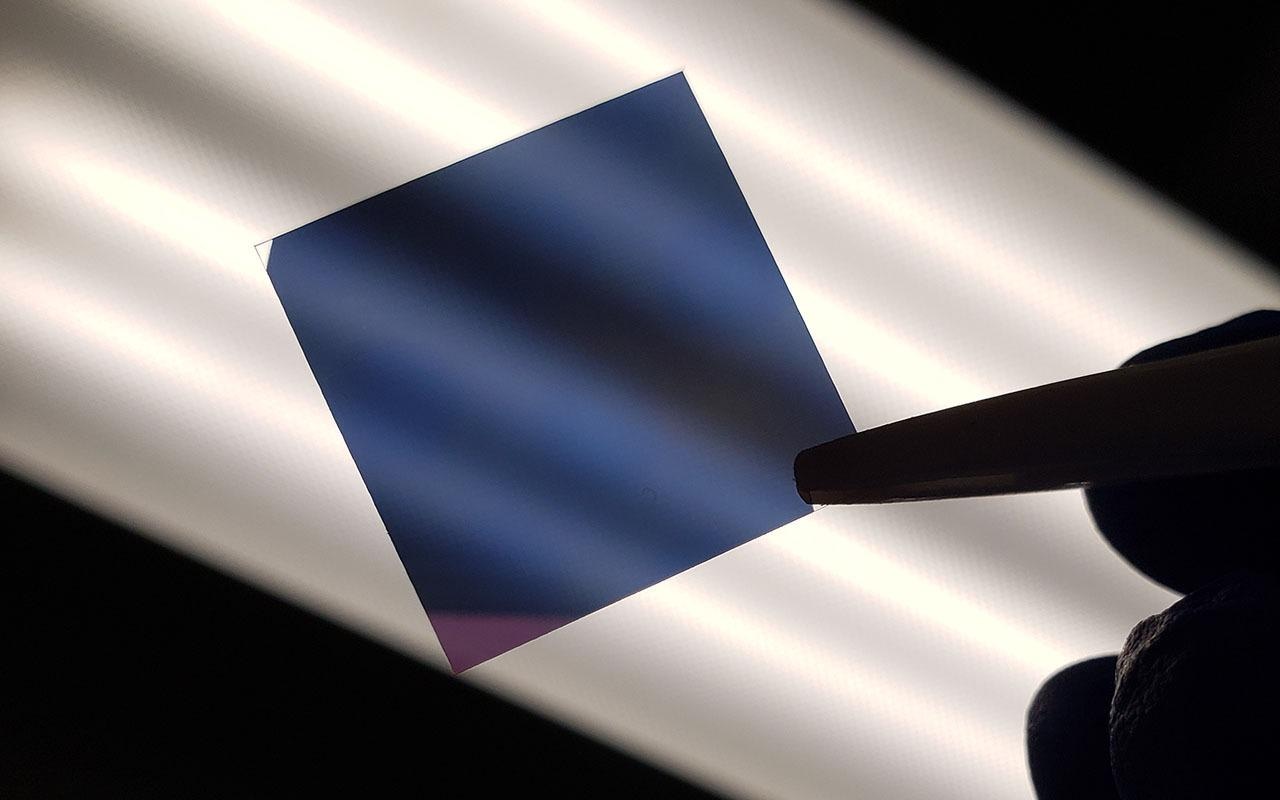Jun 1 2021
Electrical engineers from the University of California San Diego have now designed a novel technology that enhances the resolution of a normal light microscope so that it can be utilized to directly visualize the intricate details and structures in living cells.
 This light-shrinking material turns a conventional light microscope into a super-resolution microscope. Image Credit: Junxiang Zhao.
This light-shrinking material turns a conventional light microscope into a super-resolution microscope. Image Credit: Junxiang Zhao.
The new technology changes a traditional light microscope into a so-called super-resolution microscope. It involves a uniquely designed material that reduces the wavelength of light as it lights up the specimen—this reduced light is what truly allows the microscope to image in higher resolution.
This material converts low resolution light to high resolution light. It’s very simple and easy to use. Just place a sample on the material, then put the whole thing under a normal microscope—no fancy modification needed.
Zhaowei Liu, Professor of Electrical and Computer Engineering, University of California San Diego
Recently published in the Nature Communications journal, the study resolves a major limitation of traditional light microscopes—that is, low resolution.
While light microscopes are handy for imaging live cells, they are not suitable to observe anything smaller. Traditional light microscopes have a resolution limit of 200 nm, which means that any objects that are closer than this distance will not be visualized as individual objects.
Although more robust tools are available, including electron microscopes that have the resolution to observe subcellular structures, they are not suitable for imaging live cells because the specimens had to be positioned within a vacuum chamber.
The major challenge is finding one technology that has very high resolution and is also safe for live cells.
Zhaowei Liu, Professor of Electrical and Computer Engineering, University of California San Diego
The new technology developed by Liu’s research team integrates both features. With the help of this technology, a traditional light microscope can be used for imaging live subcellular structures with a resolution of up to 40 nm.
The novel technology also features a microscope slide that is coated with a kind of light-shrinking material, known as a hyperbolic metamaterial. This metamaterial is composed of nanometers-thin alternating layers of silica and silver glass.
As light travels through, its wavelengths reduce and disperse to produce a range of high-resolution random speckled patterns. When a specimen is placed on the slide, it gets lighted up in different ways by this range of speckled light patterns. This, in turn, produces a range of low-resolution images, which are collectively recorded and subsequently joined together by a reconstruction algorithm to create a high-resolution image.
The investigators used a commercially available inverted microscope to test their new technology and successfully imaged fine features, like actin filaments, in fluorescently marked Cos-7 cells—traits that are not distinctly visible using only the microscope itself. The new technology also allowed the team to clearly differentiate quantum dots and microscopic fluorescent beads that were spaced 40 to 80 nm apart.
According to the researchers, the new, super-resolution technology has excellent prospects for high-speed operation. The team’s objective is to integrate super-resolution, low phototoxicity, and high speed in a single system for imaging live cells.
At present, Liu’s research group is developing this new technology to perform high-resolution imaging in 3D space. This new article demonstrates that the novel technology can create high-resolution pictures in a 2D plane. Liu’s research group has already published an article demonstrating that the new technology can also image with ultra-high axial resolution (around 2 nm). The team is currently working on integrating the two together.
The article titled “Metamaterial assisted illumination nanoscopy via random super-resolution speckles” was co-authored by Yeon Ui Lee, Junxiang Zhao, Qian Ma, Larousse Khosravi Khorashad, Clara Posner, Guangru Li, G. Bimananda M. Wisna, Zachary Burns, and Jin Zhang from the University of California San Diego. All these authors have equally contributed to the study.
The study was funded by the Gordon and Betty Moore Foundation and the National Institutes of Health (R35 CA197622). It was partly carried out at the San Diego Nanotechnology Infrastructure (SDNI) at the University of California San Diego, a member of the National Nanotechnology Coordinated Infrastructure, which is funded by the National Science Foundation (grant ECCS-1542148).
Journal Reference:
Lee, Y. U., et al. (2021) Metamaterial assisted illumination nanoscopy via random super-resolution speckles. Nature Communications. doi.org/10.1038/s41467-021-21835-8.